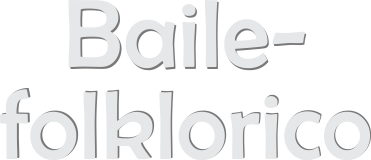
Think of a stage on which a woman with a warm smile on her face is twirling her multi–coloured skirt round and round. Circling around the senorita is a man in his three-piece suit clicking his boots on the hardwood floor. What grace and elegance, isn’t it? If you witness any such thing, then you are watching the Baile Folklorico. Although some indigenous dances of the American Southwest are called Baile Folklorico, it literally refers to the traditional dances of Latin America, specifically Mexico and Central America. One of the unique characteristics of Baile Folklorico is that it is a combination of local folk cultures with ballet characteristics namely the pointed toes as well as the highly choreographed exaggerated movements. It is often said that when a woman raises her hands about her head with her legs shown, it is a folklorico.
The origin of Baile Folklorico, a traditional Mexican folk dance dates back to the 1810 Mexico’s War of Independence when nationalism nudged the dance into a widespread popularity. However, the dance gained formal popularity when Amelia Hernandez, a resident of the Mexico City, founded the first school dedicated to ballet folklorico in 1958. She choreographed about 30 different ballets and the Mexican President Adolfo Lopez Mateos enjoyed it to the extent that he permitted the dance group to perform on Wednesday evenings and Sunday mornings at the National Institute of Fine Arts as weekly performances. On the other hand, the Baile Folklorico got popularized in the United States in the 1960s and the 70s as a way to promote pride in Mexican cultural heritage and to enhance self–esteem.
Baile Folklorico, in its initial stages, was very humble. Amelia had eight dancers in her group as it restricted the types of performances they could give. However, later the number increased to about 50 artists and this expanded her choreography by including some of the pieces for which the genre of the dance is well known and over 35 dancers dancing to the beat of live musicians. With these developments, the Baile Folklorico continued to perform in its birthplace the Mexico City at Palacio de Bellas Artes. Most of its dance forms narrate a story which often involves flirtation, love or jealousy. The three types of Ballet Folklorico include Danza, Mestizo and Bailes Regionales, all of which are regional dances. With its theatrical style, it involves movements like spinning, tapping, stomping and hopping.
Traditional Mexican Mariachis always accompany the Baile Folklorico. These Mariachis denote a traditional type of Mexican folk music which is performed by a small group of strolling musicians. However, the other styles that accompany Baile are Polka and Tejano. The traditional set of Mexican folk music includes an acoustic guitar, bass guitar, high–pitched five–stringed guitar, violin, harp and trumpet. Musicians typically play the music behind the dancers on the stage.
Baile Folklorico is predominantly recognized by its costumes. In general, women are seen with colourful layered dresses that are meant to spread and twirl as they spin on the dance floor. Men, on the other hand, are seen subtly dressed with typical black suits. The costumes differ and hint the heritage of the region, for example, the German dancers are seen in cowboy hats, boots and fringe of the male costumes whereas the costumes of Veracruz are generally white with red sashes and straw hats. The basic style of the costume appears when women adorn themselves with traditionally full, colourful skirts with either black or white boots while men wear black slacks, a brimmed hat (sombrero), a red belt and a tie.


